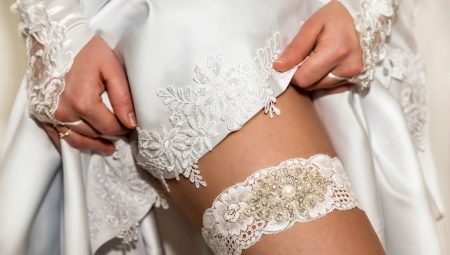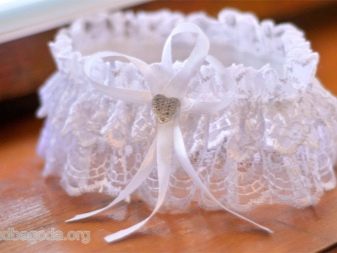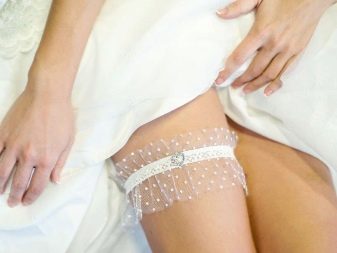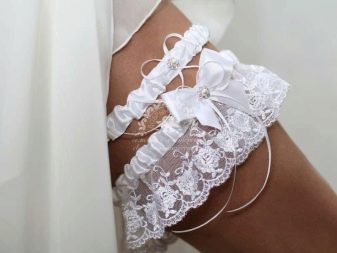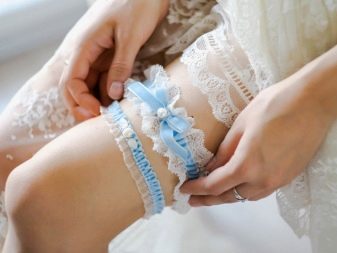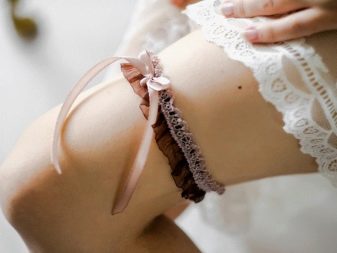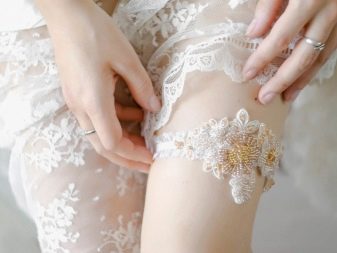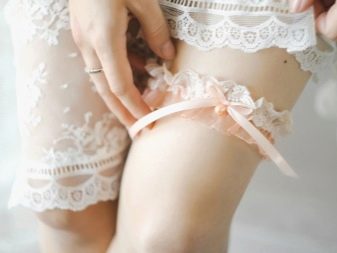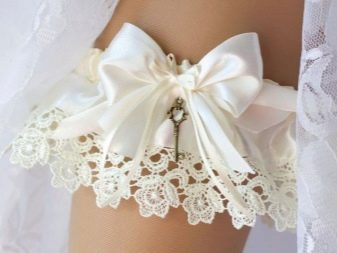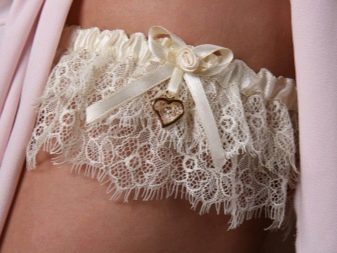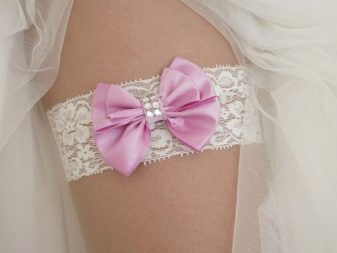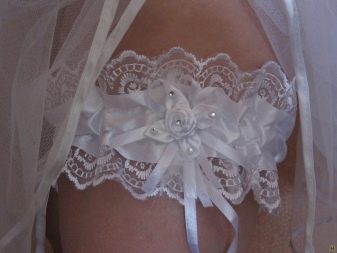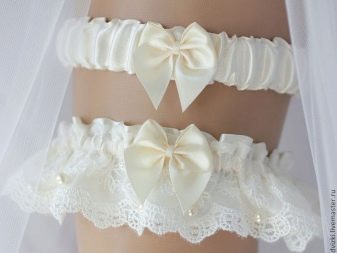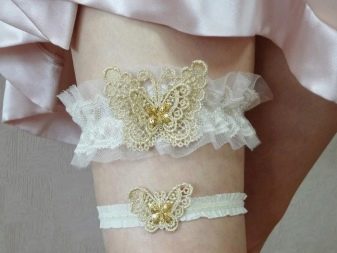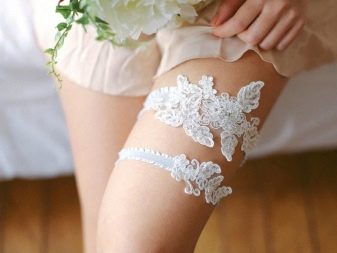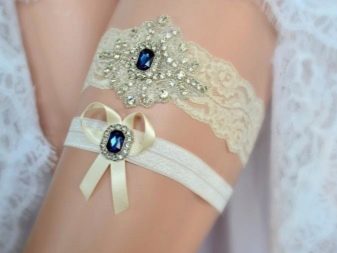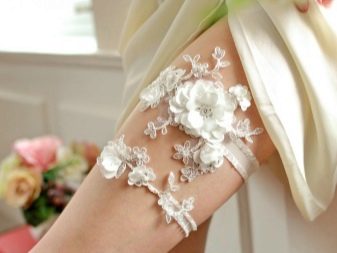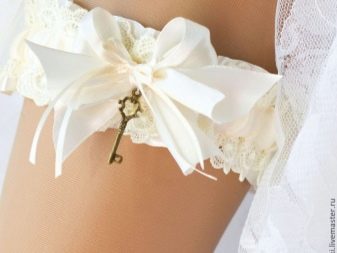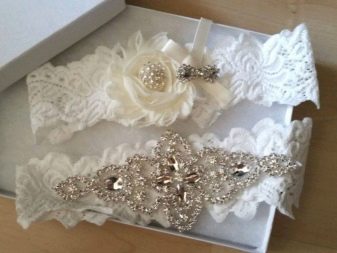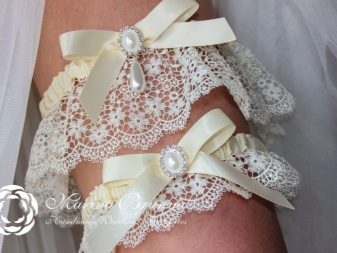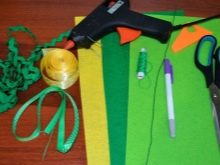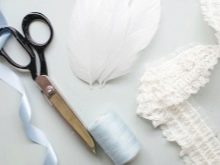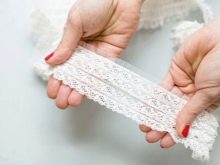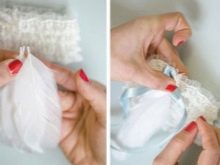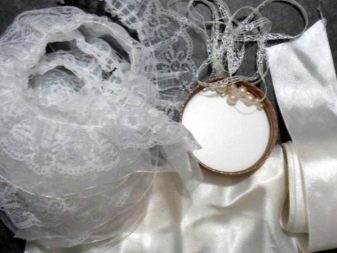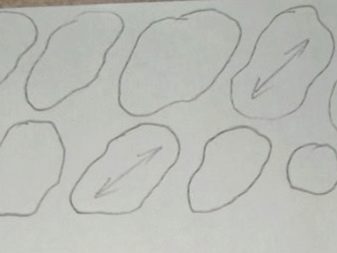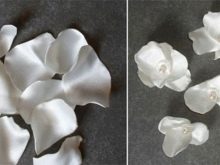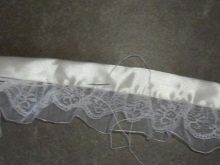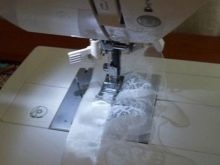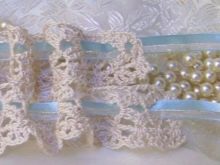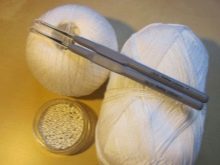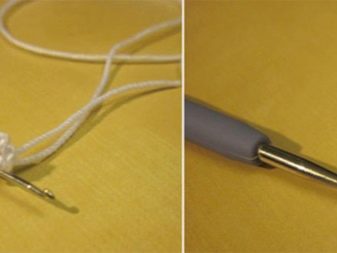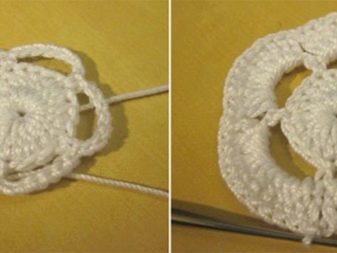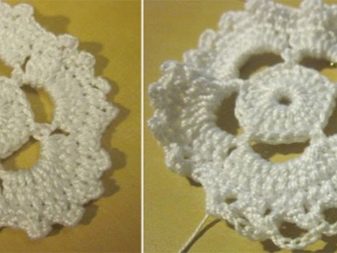In the image of the newlywed, everything should be stylish and beautiful, starting from the hairstyle, dress and ending with such an important attribute as the garter of the bride. Although this element of the wardrobe is hidden from prying eyes, but at the end of the celebration it will definitely be in the hands of one of the invitees, therefore, should surprise with its chic and originality. Today, there is a huge selection of garters on the leg, they can be purchased off-the-shelf in bridal shops, as well as sew with your own hands, making any imagination and design idea a reality.
Kinds
The wedding garter is considered the main accessory of each bride. This small and invisible detail is the object of close attention of guests, especially male. According to the traditions, the young man who will be fortunate enough to become the owner of the caught garter will soon marry. To give this element an image of individuality and originality, many girls prefer to make it themselves. When choosing a particular garter model, it is necessary to take into account that, depending on the decor and appearance, they can be:
- Thin. They are the most common option and are most often used as a supplement to the volumetric dress, decorated with openwork inserts, ribbons and rhinestones. A thin garter and a short dress will be harmoniously combined. It looks easy, gracefully and beautifully emphasizes the shape of the legs.
- Wide. They are usually chosen by the fair sex, who adore voluminous decorations. Such accessories are usually sewn from tulle, lace and satin ribbons. They are considered classic models and are characterized by a number of advantages: they are securely fastened (do not fold or twist), are easy to put on, and are ideally suited for any style of dress. If there is a lace decor in the bride's dress, then you need to make sure that it combines with the trimming of the garter.
- Double. This type differs from the previous ones in that it is suitable for adhering to two traditions simultaneously. One of the garters is removed by the bridegroom at the celebration and rushes to friends as a souvenir, and the second (“honey”) remains on the girl’s leg before the wedding night and serves as a family heirloom. Both parts must be made in the same style, with one being wide and the other thin.
In addition, wedding garters must be decorated with decor. Original accessories look, complemented by precious metals, stones or antique brooches. Design with rhinestones, sequins, beads and handmade lace is also popular. Satin ribbons and artificial flowers, which are selected according to the wedding bouquet style, give a beautiful look to garters.
Master class on making
Lace is considered the most elegant and lightweight material; therefore, it is considered to be an ideal option for sewing garters. Since brides most often for wedding choose a dress and underwear with lace inserts, the garter, sewn with them in the same style, will give the girl an unusual charm. To create a lace decoration is recommended to use soft material. You will also need scissors, pieces of satin ribbon, goose feathers, glue gun and threads with a needle (if sewing is planned without a sewing machine). The length of the elastic ribbon is selected in accordance with the volume of the feet of the bride, for this purpose it is pre-measured its wide part.
The very same sewing process is as follows.
- The prepared tape is joined along the edges and is bent by hand, then stitched on a sewing machine.
- The next step is decorating, which can be done in various ways. Using a glue gun to the basis of the garter fix feathers or replace them with other elements of decoration.
- The bow, cut from satin ribbons, is also attached to the base. Despite the fact that the main color in the image of the bride is white, it is recommended to add details of blue or blue hue. Therefore, the bow is best done not white and blue.
A satin garter will look no less original. To make it, you will need a piece of satin ribbon (at least 65 cm long), ready-made laces (7 to 10 cm wide), satin fabric (20 × 20 cm), 1 cm wide clothesline and jewels in the form of pearls, stones and beads. Tailoring is performed in steps.
- First, sketches of future flower petals are made on a sheet of thick paper. Then the sketch is transferred to the fabric and the pattern is prepared. It is worth noting that the long sides of the petals are best cut diagonally by interlacing the threads on the fabric.
- Then, with the help of a lit candle, they start processing the petals, they are heated at the edges and slightly stretched with their fingers to the sides. As a result, the petals acquire a natural wavy shape. They are carefully collected in a bud, connecting with small stitches. The middle of each flower should be decorated with a bead. Flowers are sewn on a prepared narrow ribbon of lace, which later will help to place them on the finished garter.
- Then you need to fold the satin ribbon in half and bend the place of the fold well to iron, it will simplify further work with it. Lace is inserted into the middle of the folded ribbon and first hand-sewn, then sewn with a sewing machine. From the edges of the tape you need to retreat a few millimeters, leaving a supply for a clothesline gum. Its length is cut off along the foot, fixed with pins and sewn inside the satin strip manually.
- Needlework ends with a lace connection and decoration, for which previously prepared artificial flowers are used. In addition, the garter can be supplemented with various bows, rhinestones and pearls. This will give her a touch of charm and grace.
Of course, lace and satin garters are considered the most beautiful and delicate, but if the bride has knitting techniques, she can create an accessory made of natural threads, which, apart from originality, has more advantages over synthetic material and will not cause irritations during the celebration. To create such a garter, you must have a suitable scheme, thick (560 m / 100 g) and thin (400 m / 100 g) threads of white or other shades, hooks with a thickness of 0.6 to 0.9 cm and beads.
Since the patterns on the garter will consist of many flowers, interconnected, they must first be tied in a certain quantity. For this purpose, a hook of 0.9 and thick threads are used, from which air loops (4 pcs.) Are assembled first and join them into a ring. Then proceed to the set of the first row, forming again 3 air loops. The resulting ring must be braided with columns (20 pcs.), Performing knitting crochet.
For the second row you need to dial one air and seven normal loops, creating a column without nakida. It should be in the fourth loop from the first row. The third row begins with three air loops and creates ten columns in which a nakid is placed over the tops of the arches from the previous rows. As for the fourth row, there will be only one single crochet, with alternating air loops. The result will be a beautiful flower for a wedding garter, the type of which should be tied to such items 12 pcs.
In addition, you will also need to knit an openwork mesh of thin threads, in which in the first loops made are crocheted columns, then five air loops and again a column. With this technique, the whole range of garters is knitted. Then the flowers are woven into the net, forming a solid composition, and the continuation of three more such rows is made. Above their arches should increase the number of loops to eight and weave large beads or beads. You can also decorate with pearls the entire perimeter of the accessory, pouring elements from top to bottom.
How to make a wedding garter with your own hands, see the video below.
